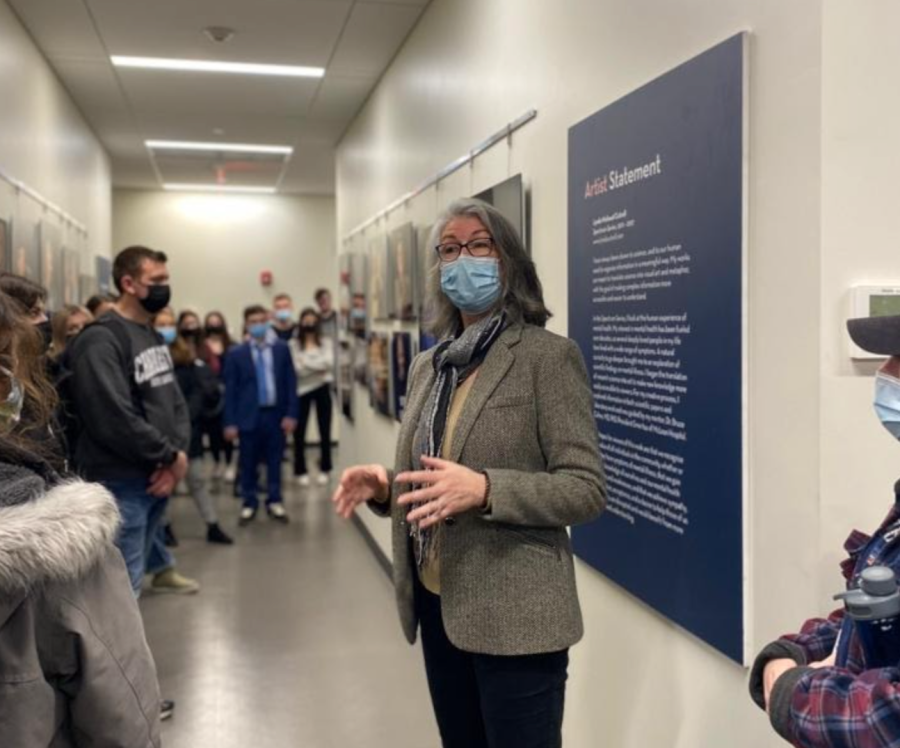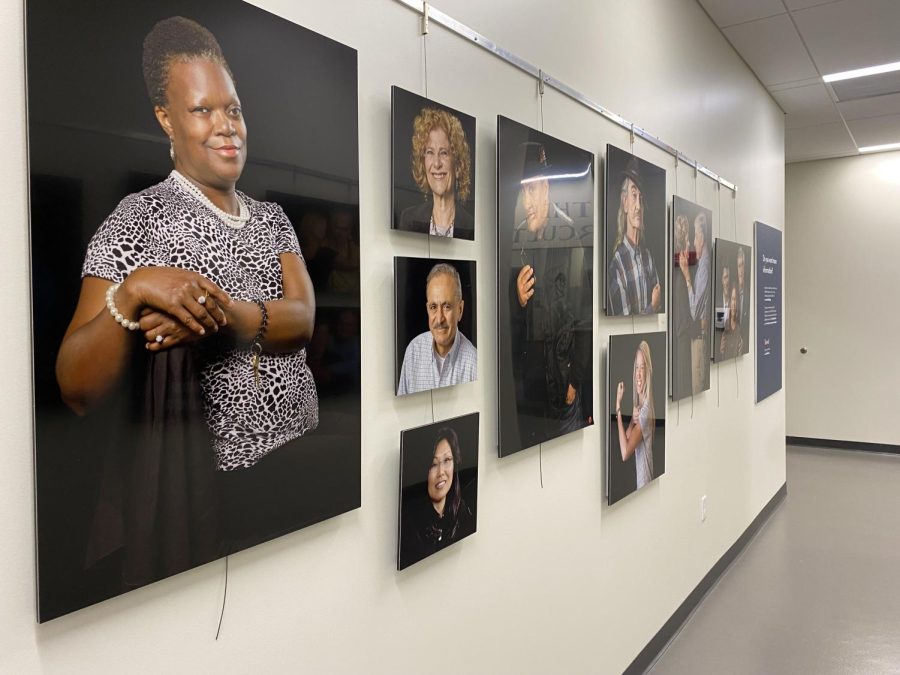99 Faces Exhibit spreads mental health awareness through art
February 11, 2022
Mental illness has been unfairly stigmatized for generations through the media. However, Lynda Cutrell, creator of The 99 Faces Project, has been spreading awareness on the topic of mental health since 2011. When asked the question what drove her to create this exhibit, Cutrell stated, “it acts as a balancing voice against what you hear in the media about mental health conditions.”
“I decided that I would take my background from both art and marketing and try to create something that would reach people more than an article,” Cutrell explains. She goes on to say that these illnesses are more common than people may think and that it is extremely rare to find a family that does not experience mental illness in some way. This is the purpose of her exhibit, showing images without labeling the subjects mental illness. This provides the audience with a new perspective, which prevents viewers from distinctly seeing mental illness on the surface of a person. In her exhibit, Cutrell shows the skin cells of a person with ‘normal’ mental health, and to the right of that image, it shows the cells of someone who suffers with mental illness. This shows the audience that mental health is embedded in the subject’s DNA.
Saint Anselm College’s Mental Health Committee, Active Minds Club, and Head Game Project teamed up to contact Cutrell and have this art exhibit displayed in the Student Center. Each of these three committees works to help spread mental health awareness to students across campus. Jordan Trombly, president of Active Minds, said, “The reason I wanted the 99 Faces exhibit to come to Saint Anselm is because I believe it will have a positive attitude towards talking about mental health.” By adding this exhibit to our student center, it shows students that anyone can suffer from mental illness, and it can encourage them to reach out to on campus support. Chris Demarkey, co-chair of the Mental Health Committee said, “The message I want our campus to take away is that there are so many people out there who suffer too, and that you are never alone.” Demarkey went on to say, “if just one person can have the same takeaway, that they are not alone, that you can make it through anything, just like the humans in the pictures have, then it was all worth it.”
Cutrell gave a tour of the exhibit on Thursday, February 3rd to staff and students accompanied by a video presentation. Kris Wilson, a campus mental health counselor, helped to obtain this exhibit on campus. Wilson stated that the purpose of this exhibit on campus is to convey the message of, “compassion, understanding, and to engage in open conversations – to try and lessen the fear of telling someone that you’re not okay.” This subject of seeking help was one of the main focuses of Cutrell’s presentation. Cutrell stated that the biggest obstacle to seeking help, especially for young adults is the concept of being embarrassed of mental illness.
Ambrose Ward, a Communication major in the class of ‘24, is an active member of the mental health committee.




